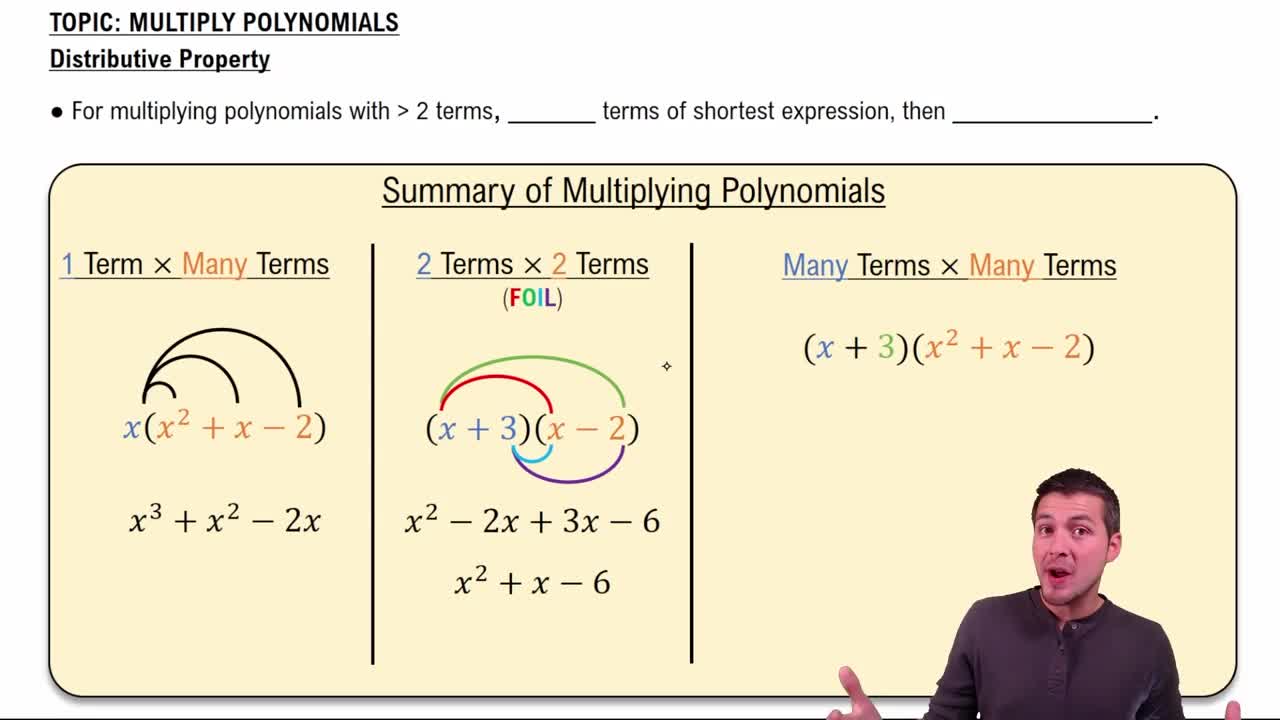Here are the essential concepts you must grasp in order to answer the question correctly.
Commutative Property of Addition
The Commutative Property of Addition states that the order in which two numbers are added does not affect the sum. In the context of the given equation, it illustrates that (3 • 7) + (4 • 7) can be rearranged to (4 • 7) + (3 • 7) without changing the result, emphasizing the flexibility of addition.
Recommended video:
Associative Property of Addition
The Associative Property of Addition indicates that when adding three or more numbers, the way in which the numbers are grouped does not change the sum. Although not directly illustrated in the question, understanding this property helps in recognizing how addition can be manipulated in expressions involving multiple terms.
Recommended video:
Distributive Property
The Distributive Property states that a(b + c) = ab + ac, allowing for the multiplication of a single term across a sum or difference. In the equation provided, the expression (3 + 4) • 7 can be simplified using this property, demonstrating how multiplication interacts with addition in algebraic expressions.
Recommended video:
Multiply Polynomials Using the Distributive Property
 Verified step by step guidance
Verified step by step guidance Verified video answer for a similar problem:
Verified video answer for a similar problem:



 7:39m
7:39m